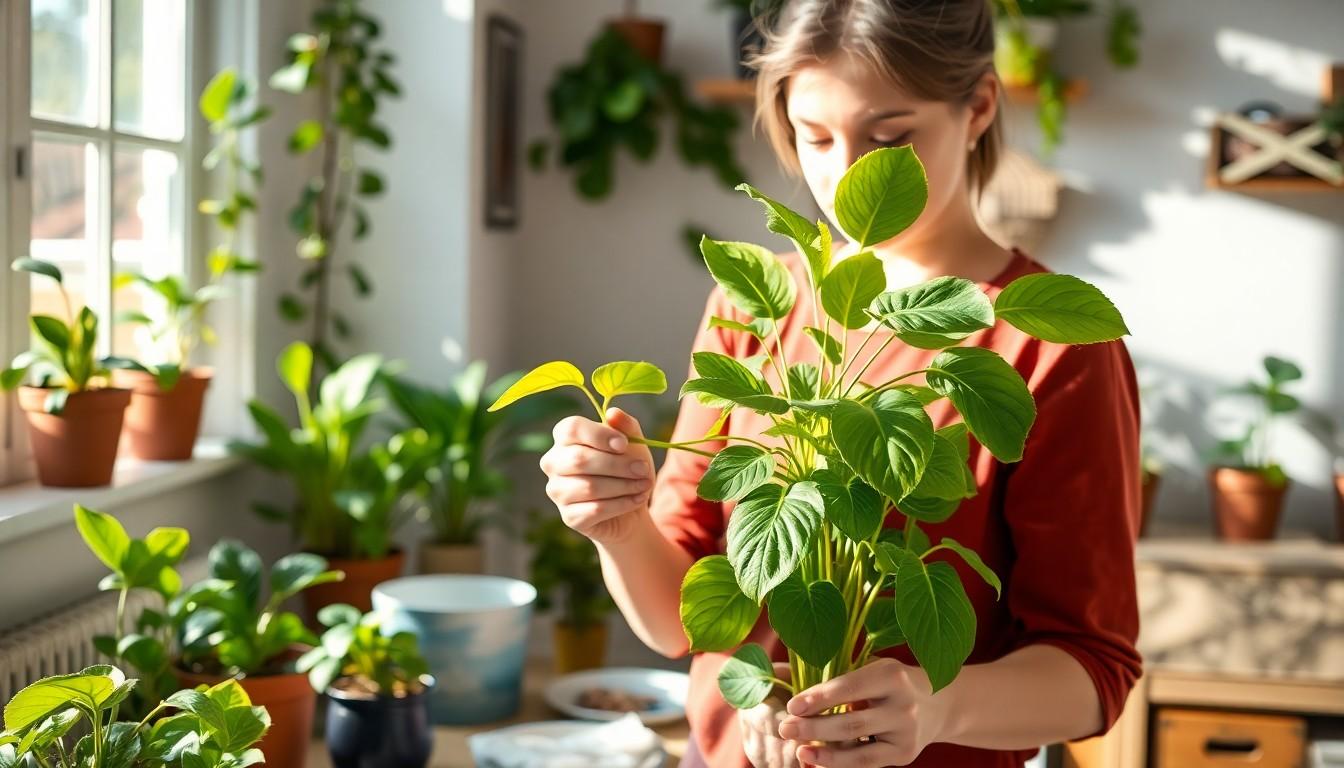House plants can bring life to any space, but what if they could multiply like rabbits? Propagating house plants isn’t just a fun hobby; it’s a green-thumbed superpower that can transform a single plant into a lush indoor jungle. Imagine the satisfaction of snipping a stem and watching it grow into a thriving new plant. Who knew being a plant parent could be so rewarding?
Overview Of Propagating House Plants
Propagating house plants involves creating new plants from existing ones. This process offers various methods, including cuttings, division, and layering. Many enthusiasts appreciate the chance to multiply their greenery without purchasing new plants.
Cuttings are a popular technique. In this approach, individuals take a healthy stem or leaf, place it in water or soil, and provide the right conditions for rooting. Many plants respond well to this method; for instance, pothos and spider plants thrive with cuttings.
Division entails separating a plant into smaller sections. This method works effectively with perennials and plants, such as peace lilies and snake plants. Ensuring each section has adequate roots guarantees better chances of survival.
Layering allows roots to develop while still attached to the mother plant. This technique involves bending a branch to the ground, covering part of it with soil, and waiting for new roots to grow. Many climbers, like philodendrons, benefit from this propagation method.
Temperature and humidity play crucial roles in plant propagation. Most houseplants prefer warm environments with humidity. Maintaining these conditions accelerates growth and establishes healthier roots. Using a humidity dome or a plastic bag can create the required atmosphere.
Timing impacts the success of propagation. Spring tends to be optimal as plants enter their active growing phase. During this season, cuttings and divisions often root faster and more successfully.
Propagating house plants offers numerous techniques and factors to consider. By utilizing methods like cuttings, division, and layering while paying attention to the environment and timing, any plant enthusiast can expand their plant collection efficiently.
Common Methods Of Propagation

Propagating house plants involves various methods, each suitable for different plant types. Below are common propagation techniques used by enthusiasts.
Stem Cuttings
Stem cuttings represent a popular method for many house plants. Cutting a healthy stem and placing it in water or soil promotes root development. Examples include pothos, which thrives in both mediums, and spider plants, that readily root from stem sections. Timing this process during spring increases the success rates, as plants are actively growing. Ensure the cuttings are at least a few inches long with a couple of healthy leaves to enhance rooting.
Leaf Cuttings
Leaf cuttings apply to specific house plants and require careful execution. Detaching a leaf, sometimes with a portion of the stem, encourages new growth. Plants like jade and African violets benefit from this method. When placing the leaf in soil, use a light soil mix to aid root formation. Maintaining humidity around the cuttings enhances success. Checking for roots can take several weeks, but patience yields rewarding results.
Division
Division serves as an effective technique for perennials. This method involves separating the plant into smaller parts, ensuring each section has roots for survival. Peace lilies and snake plants respond well to division. Performing this method during active growth phases promotes recovery and vitality. Replant each division in suitable pots with fresh soil, providing adequate space for growth. Watering lightly after replanting supports initial stabilization.
Tips For Successful Propagation
Successful propagation hinges on several key factors. It’s essential to pay attention to timing and supplies when starting the process.
Choosing The Right Time
The right timing significantly impacts propagation success. Spring serves as the ideal season due to increased growth activity in plants. Optimal temperatures typically range from 65 to 75°F for most houseplants. Sunny days with moderate humidity create perfect conditions for cuttings to root. Specific plants thrive better when propagated early in their growing cycle. Observing your plants can reveal signs of readiness for propagation, such as new growth or increased leaf production.
Tools And Supplies Needed
Having the right tools ensures a smooth propagation process. Sharp scissors or pruning shears help make clean cuts, minimizing damage to the parent plant. A small pot with drainage holes supports healthy root development. Quality potting mix retains moisture while providing adequate drainage. Watering cans allow for precise moisture control. Additionally, plastic bags or humidity domes can create a favorable humid environment for cuttings. Finally, labels assist in tracking different propagation attempts, enabling better care and monitoring.
Popular House Plants For Propagation
Several popular house plants are well-suited for propagation, allowing plant enthusiasts to expand their collections efficiently. Understanding which plants thrive in these methods can enhance the propagation experience.
Pothos
Pothos ranks among the easiest house plants to propagate. By cutting a healthy stem, ideally one with several leaves, a new plant can emerge when placed in water. Roots typically develop within two to four weeks in bright, indirect light. Fresh cuttings can also root directly in soil, promoting quicker growth once they establish strong roots. Pothos plants flourish in warm, humid conditions, making spring the perfect season for propagation. Their resilience means they adapt well to various environments, allowing beginners to succeed with minimal effort.
Spider Plant
Spider plants are another favorite for propagation. Offsets, or “babies,” form at the end of their long stems, making them ideal candidates for new growth. Selecting a healthy offset with visible roots simplifies the process. After detaching these offsets, placing them in soil or water fosters rapid root development. Patience yields results, as roots can take a few weeks to form. Adequate light and humidity enhance thriving conditions, and spring offers the optimal growing phase for healthy propagation. Spider plants are forgiving, making them a top choice for novice plant parents.
Succulents
Succulents also provide excellent opportunities for propagation. Leaf cuttings from healthy succulents can root effectively in soil. By letting cuttings dry for a few days to form a callous, the chances of successful propagation increase. Planting them in well-draining soil fosters root growth. As succulents prefer bright light, placing them in a sunlit area accelerates the rooting process, typically taking several weeks under optimal conditions. During warmer months, propagation becomes simpler, allowing for a gradual increase in succulent collections. Success with succulents adds diversity and beauty to any indoor space.
Conclusion
Propagating house plants is more than just a hobby; it’s a fulfilling journey that deepens one’s connection to nature. By mastering various techniques like cuttings, division, and layering, plant enthusiasts can effortlessly expand their indoor gardens.
With the right timing and conditions, anyone can experience the joy of nurturing new life from existing plants. Whether it’s the ease of pothos cuttings or the charm of spider plant offsets, each propagation success brings a sense of accomplishment.
As they cultivate their skills in plant propagation, individuals not only enhance their living spaces but also embrace the rewarding experience of becoming a dedicated plant parent.




